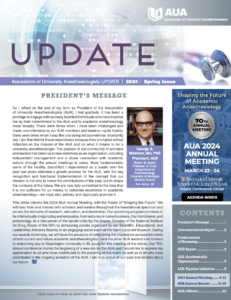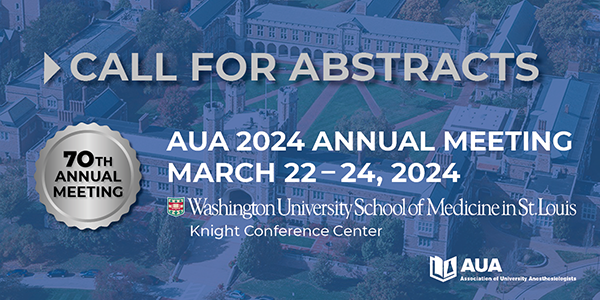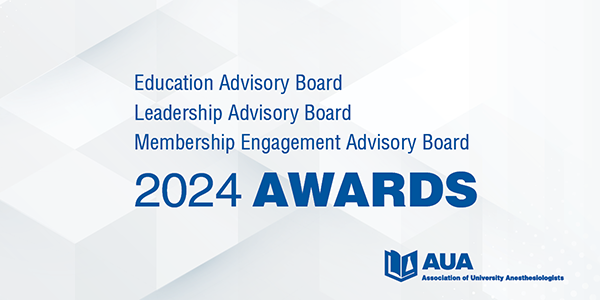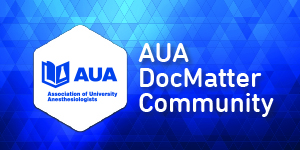President’s Message: Looking Back and Forward
The Association of University Anesthesiologists (AUA) had a momentous year of transition and promise. 2023 was marked by both the important decision to return to an independent organization and the work to actualize the process. Many people stepped up in remarkable ways to complete the transition to new society management. I would like to recognize the many efforts of our AUA leaders, team members from the International Anesthesia Research Society, notably Tom Cooper, and our wonderful colleague Vivian Abalama, who has been instrumental in helping us advance the mission of the AUA while also making this transition. I am pleased to announce that, as of December 2023, the Association Resource Center (or ARC) is our new association management company. ARC works with other important organizations in the field, such as the Society of Academic Associations of Anesthesiology & Perioperative Medicine and the Society for Education in Anesthesia, among many others. We look forward to their expert support and partnership moving forward.
Continue Reading…









